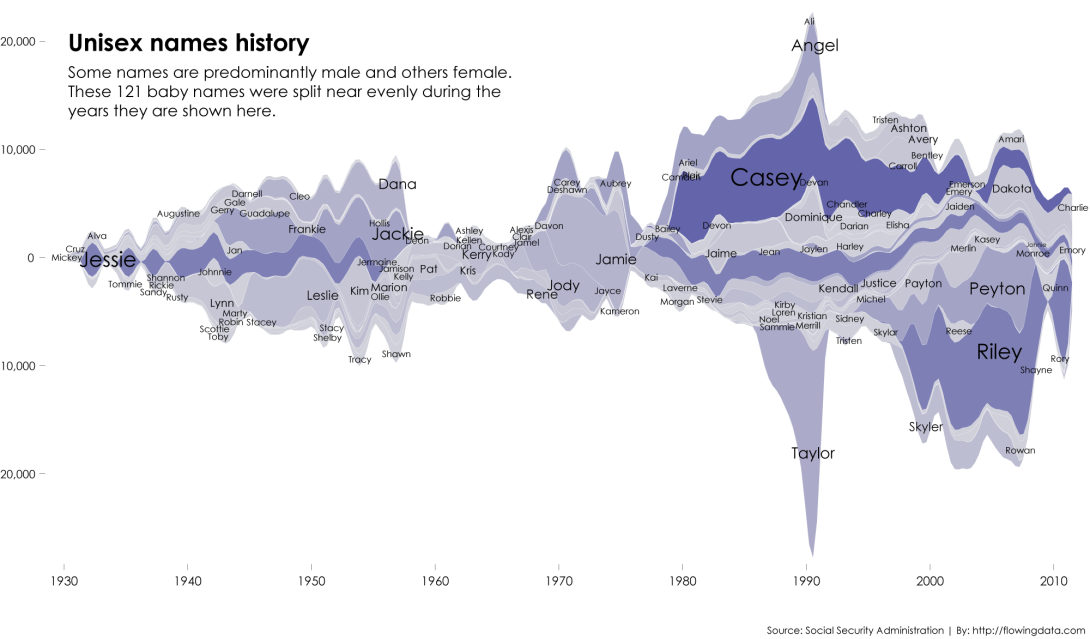The Most Unisex Names in US History

Moving on from the most trendy names in US history, let’s look at the most unisex ones. Some names have always been predominantly male, such as Frank and Joseph, and some names are mostly female, such as Jessica and Michelle. However, there is a small group of names that is split between male and female. The charts above show the most unisex names between 1930 and 2012.
Jessie, Marion, and Jackie top the list, as they’ve stuck around that 50-50 split over the decades. Of course, as you move down the list, there are more slopes up and down and some noisy spikes for the less common baby names, such as Gale and Alva.
For trendy (and poisoned) names, the results are more easily explained. There’s often a direct cause — an event, actor, movie, or song — that triggers a spike or a dip. The unisex explanations are less straightforward. There are subtle spikes like when Marion Jones won gold in the Olympics (and eventually lost them), when Jackie Robinson entered the major leagues, or when Disney named their mermaid Ariel, but the changes are for the most part gradual. A name slowly becomes more male or female. Most unisex names only stay that way for a few years.
You can kind of see this when you look at the percent of babies with a unisex name over the years. Maybe there’s a mild upward trend, but it’s more or less noisy through the years.

The data is more interesting on a name-by-name basis.
The chart below shows names when they were unisex, so you can see names shift in and out. As you can see, that spike in 1992 you see in the previous chart was probably from Taylor shifting from a mostly male name to mostly a girl’s name. Again though, it’s not obvious why. The closest thing I could find was Jonathan Taylor Thomas making parents want to name their girls by his middle name. But that doesn’t make sense.
Update: A couple more possibilities for the Taylor shift. The character Taylor Hayes first appeared on The Bold and the Beautiful in 1990, and as we saw with the most trendy names, soap operas used to influence. There was also the singer Taylor Dayne, whose first pop hit was “Tell it to My Heart” in 1987. My bet is on the soap opera Taylor. [Thanks, Alexis and Nicole]
The first charts rank names based on mean squared error from the 50-50 line. This chart on the other hand goes by count and a simple percent threshold. In this case, a name is considered unisex if it’s somewhere between a 60-40 split and a 50-50 split between the sexes. Jesse, Casey, Riley, and Peyton lead the way.
So there are your unisex names. Next step: Figure out why these names shift.
Become a member. Support an independent site. Make great charts.
See What You GetFlowingData is made possible by supporting members. Since 2007, I, Nathan Yau, a real person, have been analyzing and visualizing data to help more people understand and appreciate it in their everyday lives.
If you liked this or want to make similar data things, please consider supporting this small corner of the internet. You get unlimited access to visualization courses, tutorials, and extra resources. Thanks. — Nathan



